Heidi Parkes is a quilt artist exploring concepts of place, relationship, and memory. A graduate of The School of the Art Institute of Chicago, Heidi has worked as a ceramicists’ apprentice, a high school art teacher, and now has established a loyal following as a quilter and mender. Heidi’s award-winning work has appeared locally in numerous shows in Milwaukee; at QuiltCon; as part of the 2017 Piecework Collective exhibit in New York City; and in textile museums including: the New England Quilt Museum, the San Jose Museum of Quilts and Textiles, the Wisconsin Museum of Quilts and Fiber Arts, and the Dairy Barn Arts Center. Heidi will be teaching in Nashville at QuiltCon 2019 and has two upcoming workshops with The Makerie in Boulder, Colorado in April 2019. Heidi is active within her local quilting community, and is a member of the Midwest Fiber Arts Trails, the Milwaukee Art Quilters, the Chicago MQG, and One-Onethousand. In addition, Heidi is a certified yoga instructor and teaches workshops like Yoga for Makers with Siddhi Yoga. Welcome, Heidi!
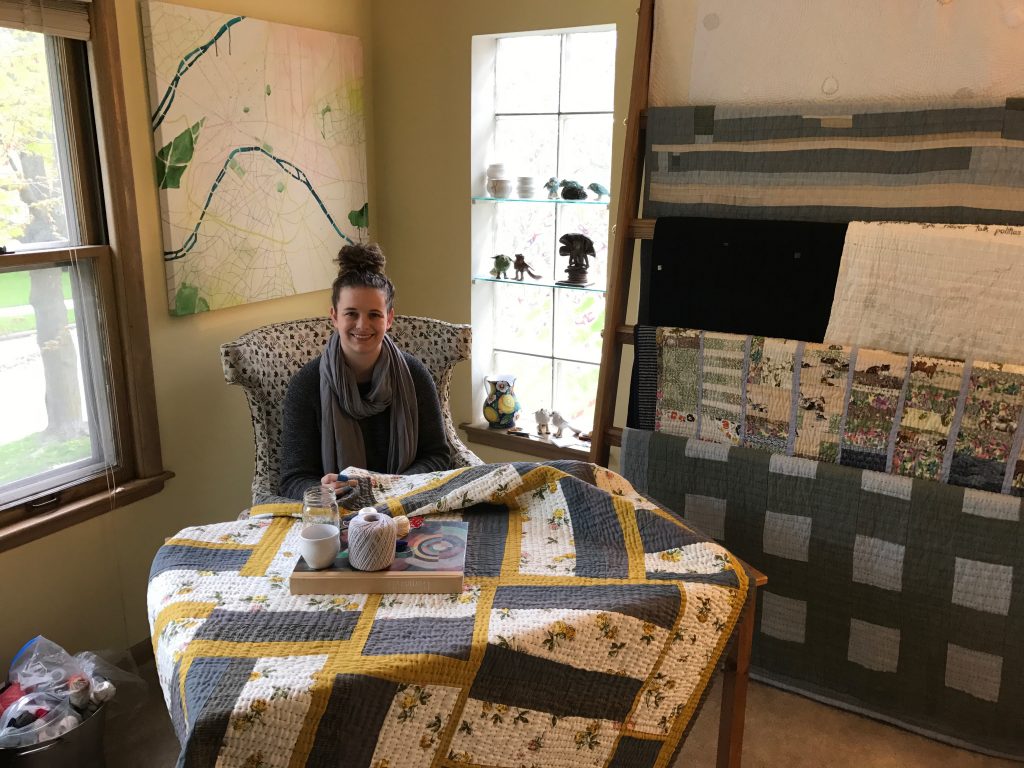 How would you describe your quilting style/aesthetic?
How would you describe your quilting style/aesthetic?
Heidi: Most of my aesthetic choices boil down to highlighting the fact that I make my quilts by hand. I especially love visible hand piecing, which I first got into when I visited Seoul, South Korea in early 2015.
My first creative love was ceramics, and I have long been inspired by the Japanese aesthetic of wabi-sabi, which for me, is about allowing, about the ephemeral, about collaborating with nature, and about the denial of the mistake.
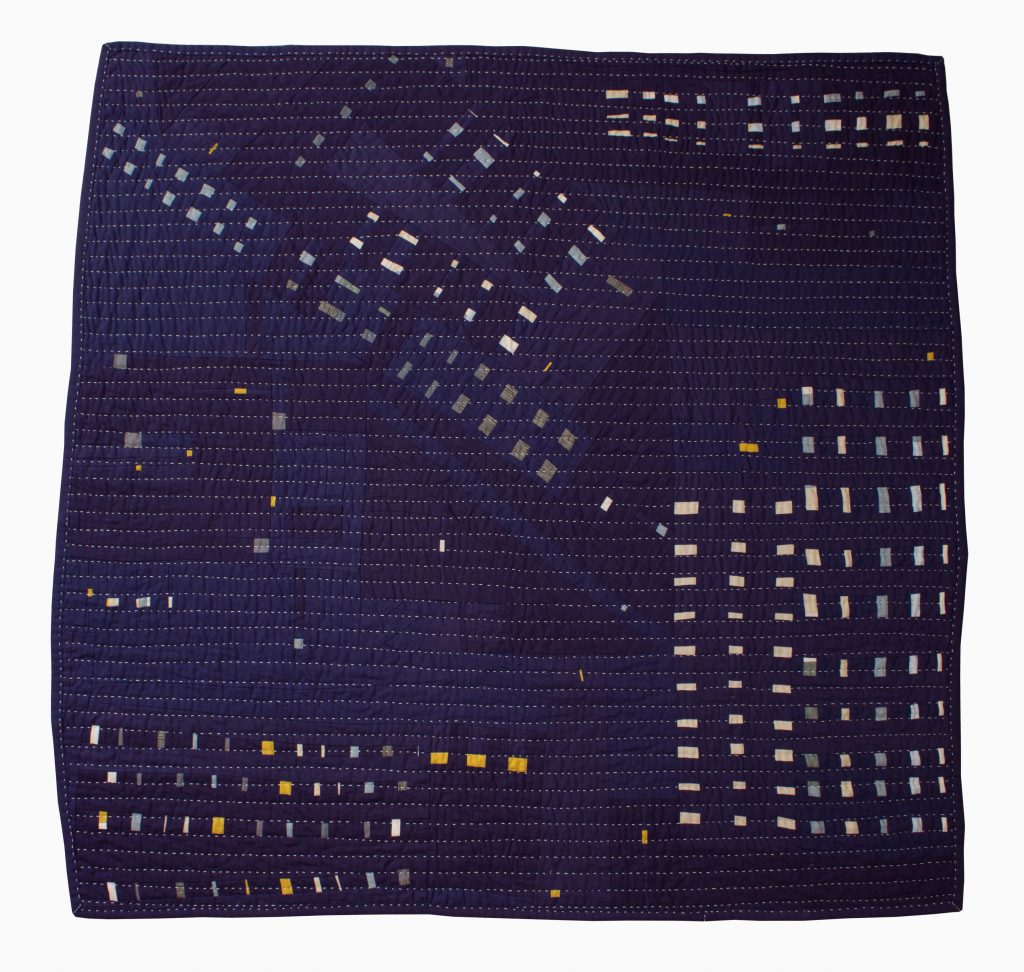
Night Flight No. 2. Image courtesy of Heidi Parkes.
How would you describe the creative environment in your home as a child?
Heidi: I grew up with a kid-sized wooden ‘art table,’ in my kitchen, overflowing with art supplies that were ready for me at any moment’s notice. I had a toy easel, pottery wheel, and crochet hook. I vividly remember ‘sewing,’ with a toy shoelace and cardboard picture cutout while on vacation when I was about 4.
All this is to say, that I grew up in a home that strongly encouraged the arts. My mom was my school’s ‘picture lady,’ and she would teach my class about art regularly. My maternal grandmother has an art degree, and I posed for her sculptures as a kid. I would visit her for a week or two every year in New Mexico where we would make pottery in her studio, water color in the mountains, and buy beads at the flea market. She organized a collaborative quilt when I was born, and had all the women in my family make squares- they all had impressive skills in their blocks, too!
My mom sewed clothes and Halloween costumes for my brother and me. She also made handmade food and preserves. My dad and paternal grandpa were woodworkers, and my dad was often making something useful for our home; including a bed frame for me, remodeling the house, and wooden light switch & vent covers.
My maternal grandpa owned a plaster company and made faux plaster stones for buildings, including many of the exhibits at the Milwaukee Public Museum. My paternal grandmother loved to garden.
A favorite treat growing up was our annual winter trip to the Art Institute of Chicago, followed by tea at the Drake Hotel. I was very lucky creatively as a child.
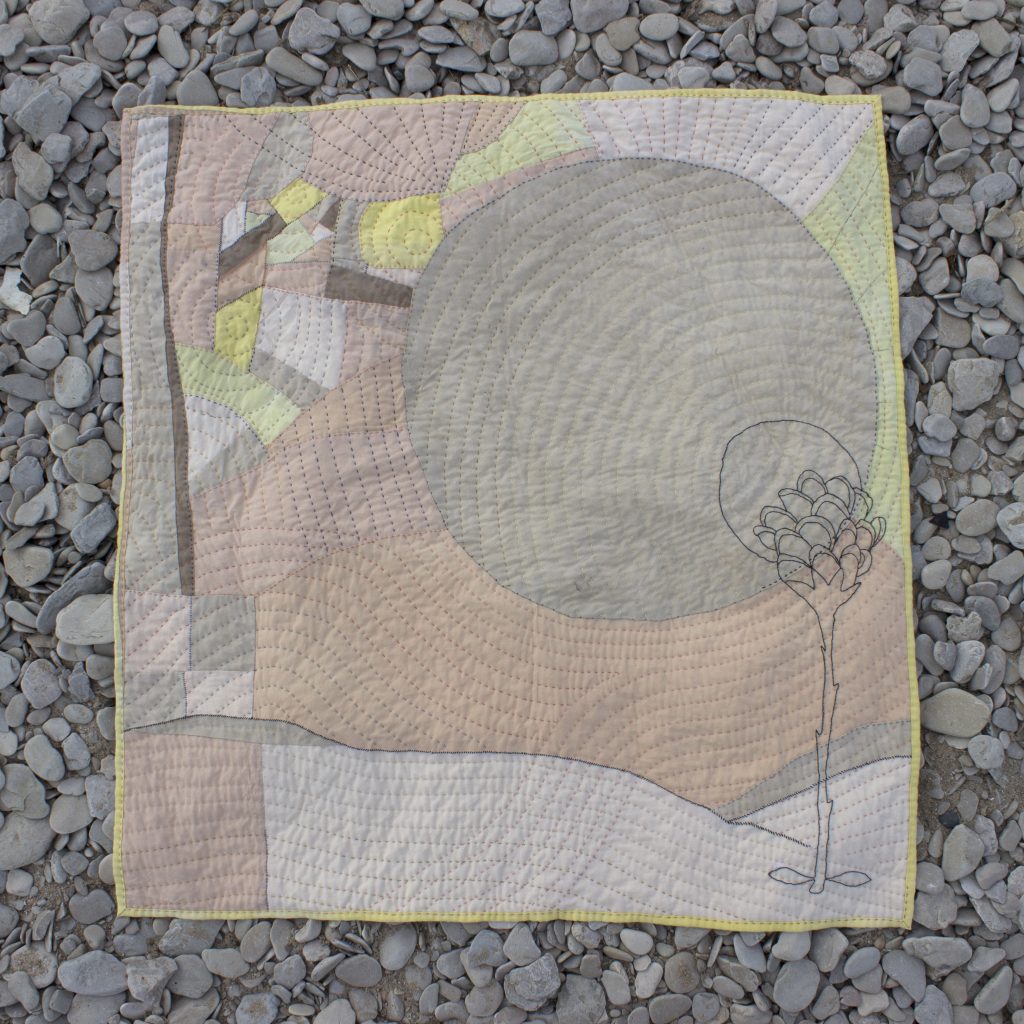
The Loveliest and Saddest Landscape in the World. Image courtesy of Heidi Parkes.
What artists and makers do you most admire or have an influence on your work?
Heidi: Here are just a few top favorites (truly, I’m still leaving so many people out that it hurts), I feel so lucky to know a few of them personally:
Mark Bradford, Felix Gonzales-Torres, Ghada Amer, Andy Warhol, Julie Mehretu, Deb Sokolow, Ann Wilson, Diana Guerrero Macia, Alighiero Boetti, Michelangelo Buonarroti, Georgia O’Keeffe, Cy Twombly, Mark Rothko, Gerhard Richter, Lee Bontecou, Agnes Martin, William Kentridge, El Anatsui, Do Ho Suh, Egon Schiele, Andrea Zittel, Sally Mann, Jim Hodges, Ragnar Kjartansson, Marina Abramović, Meredith Monk, Ann Hamilton, Margaret Kilgallen, Ai Kijima, Kerry James Marshall, Njideka Akunyili Crosby, Xavier Toubes, Tony Oursler, Cornelia Parker, Yinka Shonibare MBE, Cai Guo-Qiang, Maura Grace Ambrose, Luke Haynes, Pauline Boyd, Zak Foster, Adam Pogue, Sherri Lynn Wood, Tricia Royal, Sarah Nishiura, Anja Notanja, Matthew Lanci, Marlee Grace, Sonya Philip, the quilts of Gee’s Bend, Korean Patchwok, Kantha, Sashiko, Boro, the Japanese aesthetic of Wabi-Sabi, Anthony Bourdain, Grant Achatz, Gabrielle Hamilton, Stephanie Pearl-McPhee, Marcel Proust, and Antoine de Saint-Exupery.
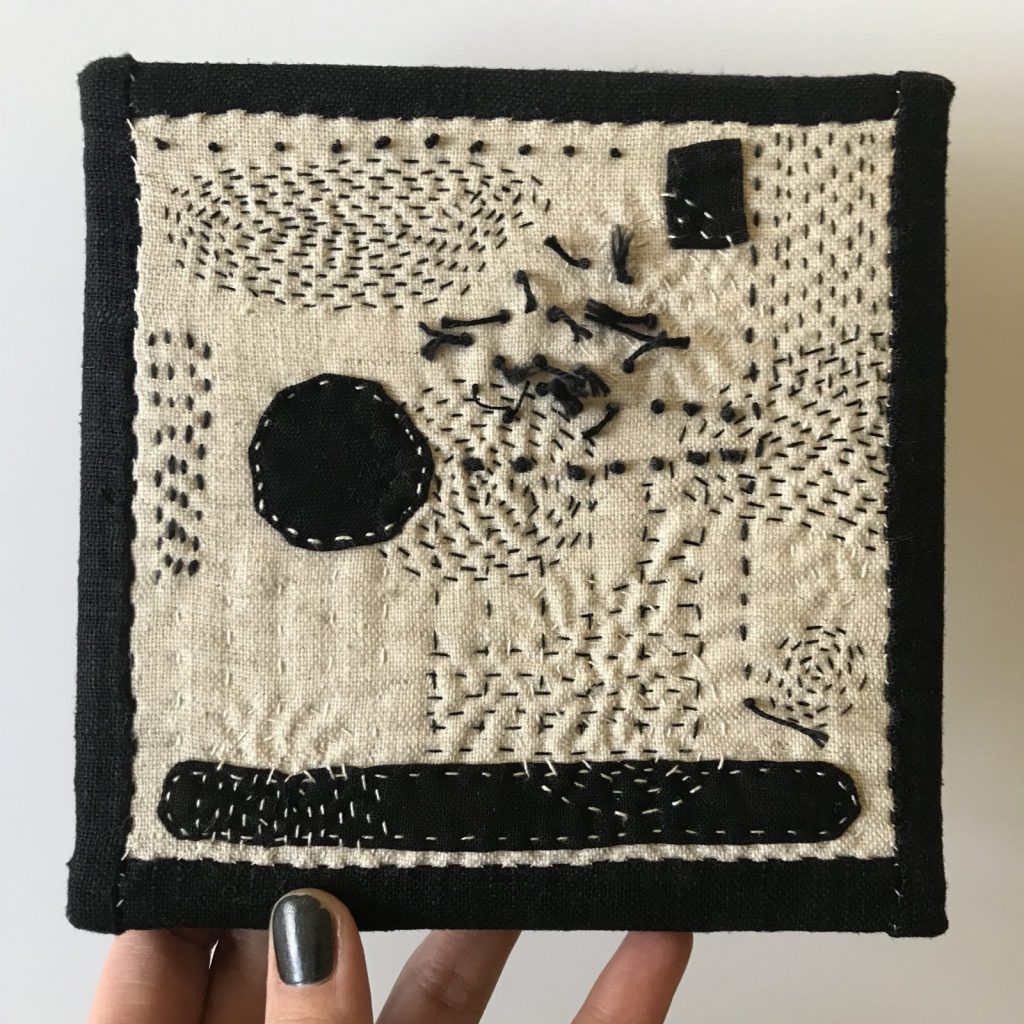
A mini quilt exploring the use of knots, French knots, appliqué and overlapped lines of hand-quilting. Image courtesy of Heidi Parkes.
Do you consider yourself a “quilter”, an artist, or some combination of both?
Heidi: Artist is a title that I have ‘owned’ for a very long time, and quilter is a title that I’ve newly earned. I’m proud to be both.
This question hints at a larger question that I often see in the quilt world about owning the term ‘artist,’ and I have some feelings about that: ‘Artist’ isn’t any better or worse than ‘quilter,’ but they are different. Quilter is specific, and not all artists are quilters, the same way that not all artists are painters. To me, quilting is clearly part of ‘the arts’ the way that dance, theater, music, culinary, ceramics, photography, and writing are ‘arts.’ That said, not every writer has to claim the title ‘artist,’ just as every quilter doesn’t have to claim ‘artist’. I’ve been an artist since I was 5, at least. I still think a kid can be an artist. I now have a fancy degree in art, and know a lot about art, but I’m as much an ‘artist’ now as I was at 5 years old. ‘Artist’ is a generous title, and not an exclusive one. I went to college, took tests, and renewed certificates to be a ‘teacher,’ but ‘artist’ isn’t like that. Honestly, teacher is more nuanced than that, too- I know lots of teachers who aren’t certified… Anyways, I want to say that: if you feel like you’re an artist, you probably are one. If you routinely use your creativity to make things that are unique in the world: you’re probably an artist. If you care about being an artist, and know the names of other artists, and watch shows like PBS Art 21, and read blogs like this one: you’re probably an artist. Same as many things though, the next step is being a good artist, or a better artist, or an exhibiting artist, or an artist who sells their art. In the art world, I’ll be ‘an emerging artist,’ till 2020, when my exhibition record is long enough to graduate to ‘an established artist.’
I also identify very strongly as a person who loves art. I’d rather go to an art museum than to a concert. I’d rather meet Mark Bradford (which I did in 2011), than meet Lady Gaga. Like the quilt world, the art world is still relatively accessible. Most art colleges have free public art lectures. Gallery hopping is free.
If you want to be ‘part of the art world,’ it’s an easy world to engage with. I’d love to see more quilters (and quilts!) in that world. Especially in the female dominated field of quilting; we need to ask for opportunities to exhibit, charge prices that value our time and talent, and interact with the worlds that we want to be a part of.

Heidi meeting Mark Bradford, one of the artists that inspire her work. Image courtesy of Heidi Parkes.
How would you define “making with intention”?
Heidi: Making purposefully, often with sincerity.
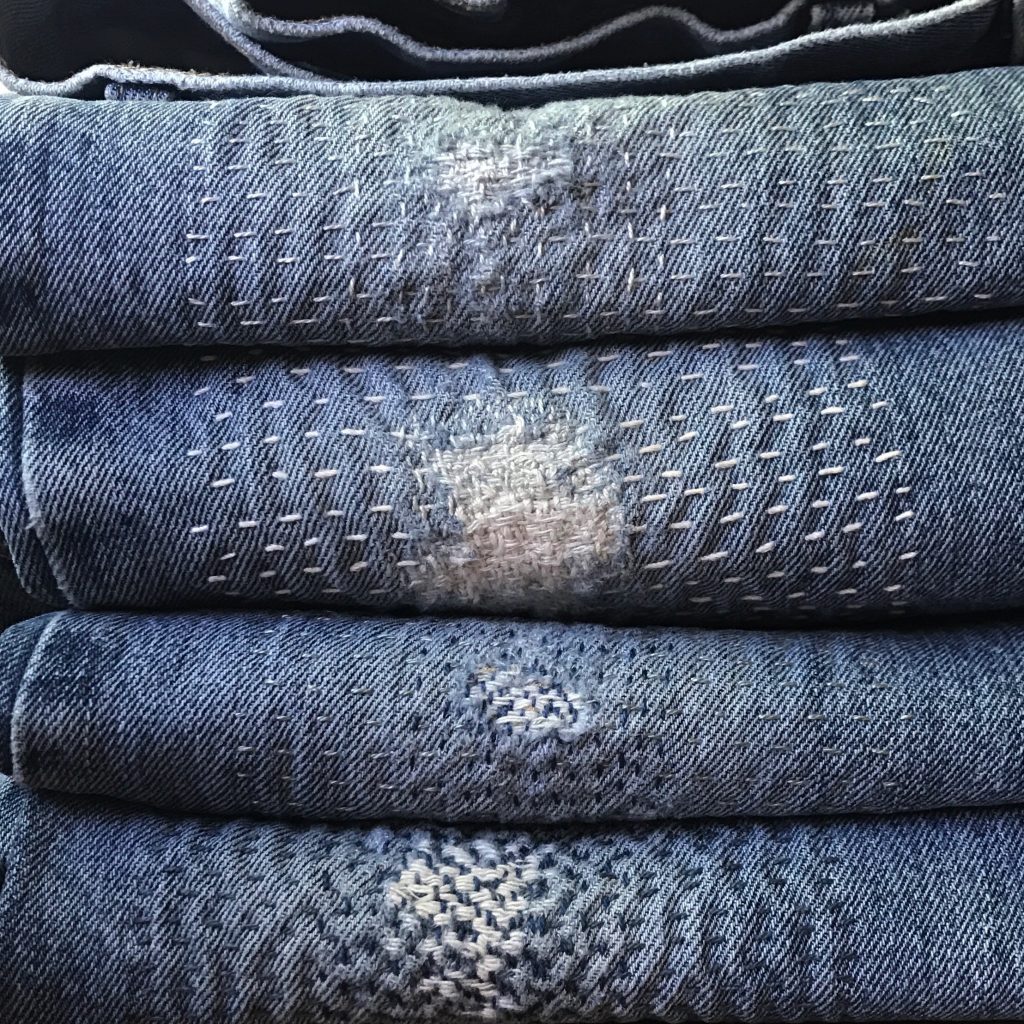
A stack of jeans that Heidi mended for her dad between Father’s Day 2016, and his passing in June 2018. Image courtesy of Heidi Parkes.
Do you think that having a craft makes us more compassionate? If so, then how?
Heidi: Only in that it gives me patience, and brings a calm within the storm. Life is better because I have a craft, and therefore I have more ability to be compassionate.
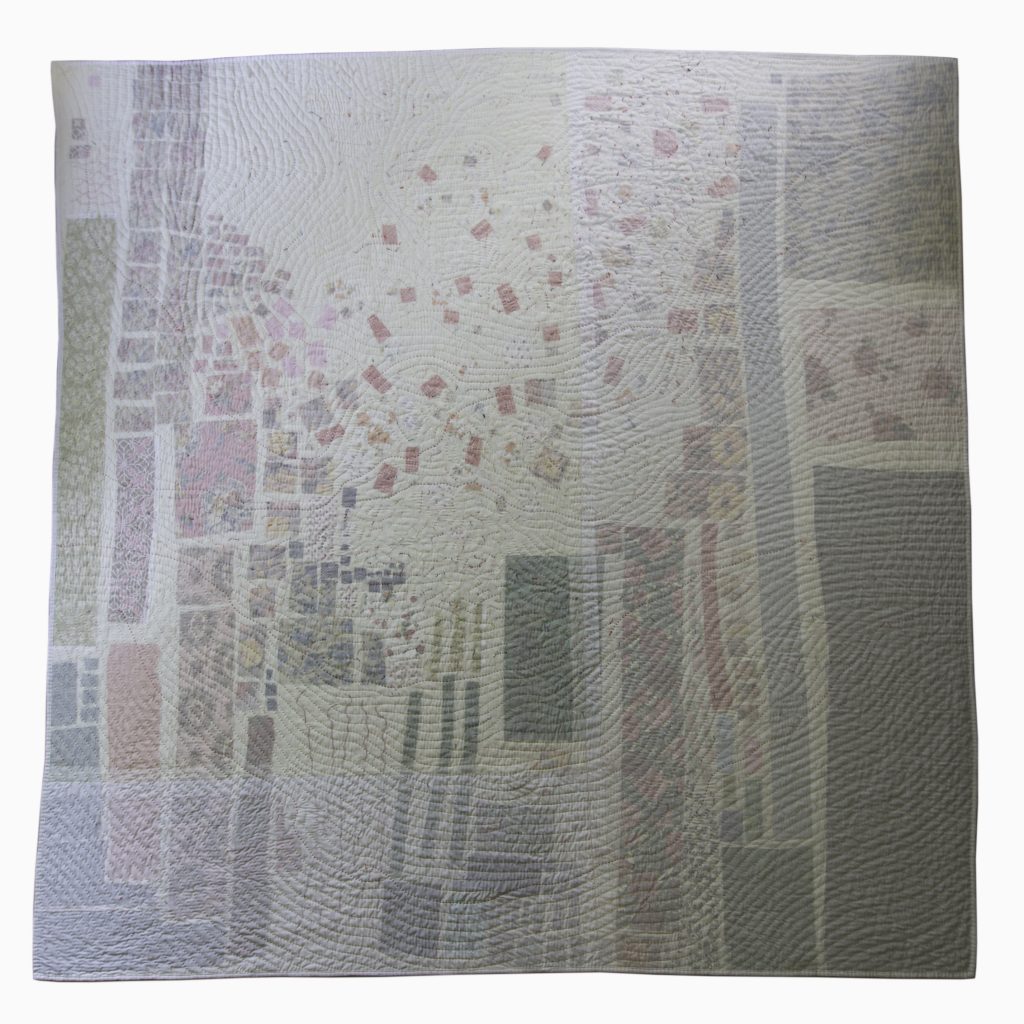
But, I Tried to Remember. Image courtesy of Heidi Parkes.
How does creating feed your soul/spiritual purpose?
Heidi: I use my quilts as a space to investigate my soul and purpose. My recurring themes are about relationships, location, and memory. Having a place to ponder these questions is an essential part of who I am.
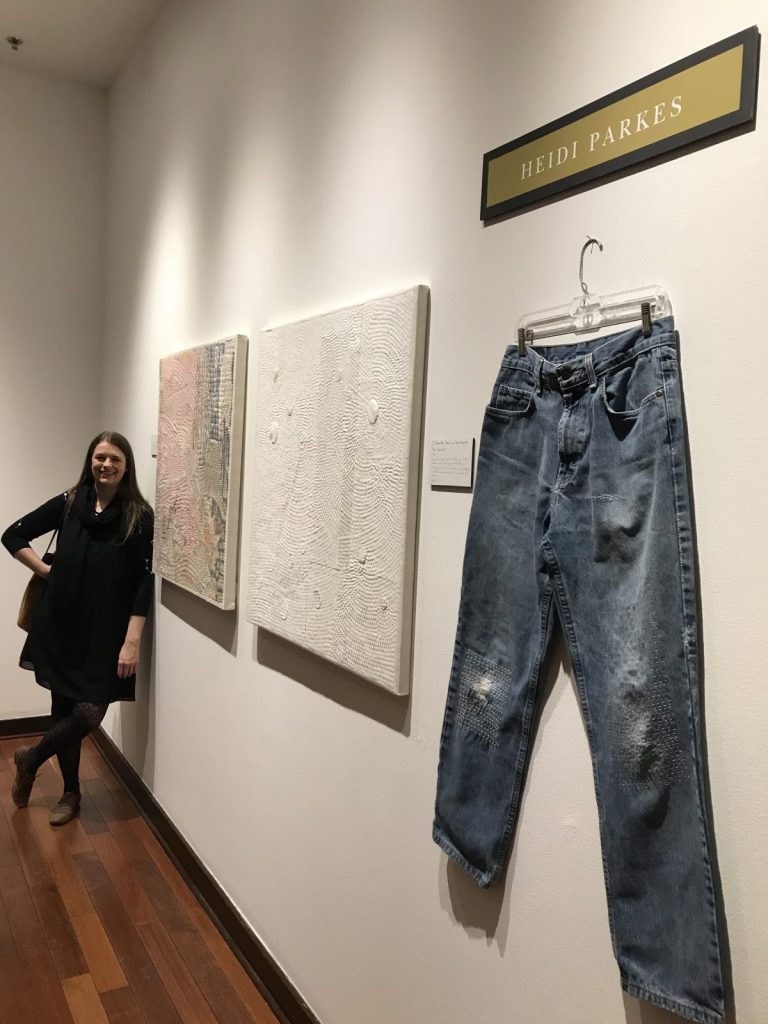
Heidi with her work “But What Was It Like?” “I Know the Stars are There Beyond the Clouds,5,” and “My Dad’s Mended Jeans.” Her work placed her as a finalist for the Pfister Hotel Artist Residency. Image courtesy of Heidi Parkes.
Are there any rituals that you perform to prepare/ground yourself in your work?
Heidi: Not really. I don’t have much of a daily structure or ritual. The work is the thing that grounds me, quilting/making is my ritual, and without that, I would be off-balance.
(I do practice and teach a lot of yoga though, and I’m sure that helps to keep my body healthy for all of the artmaking that I do.)
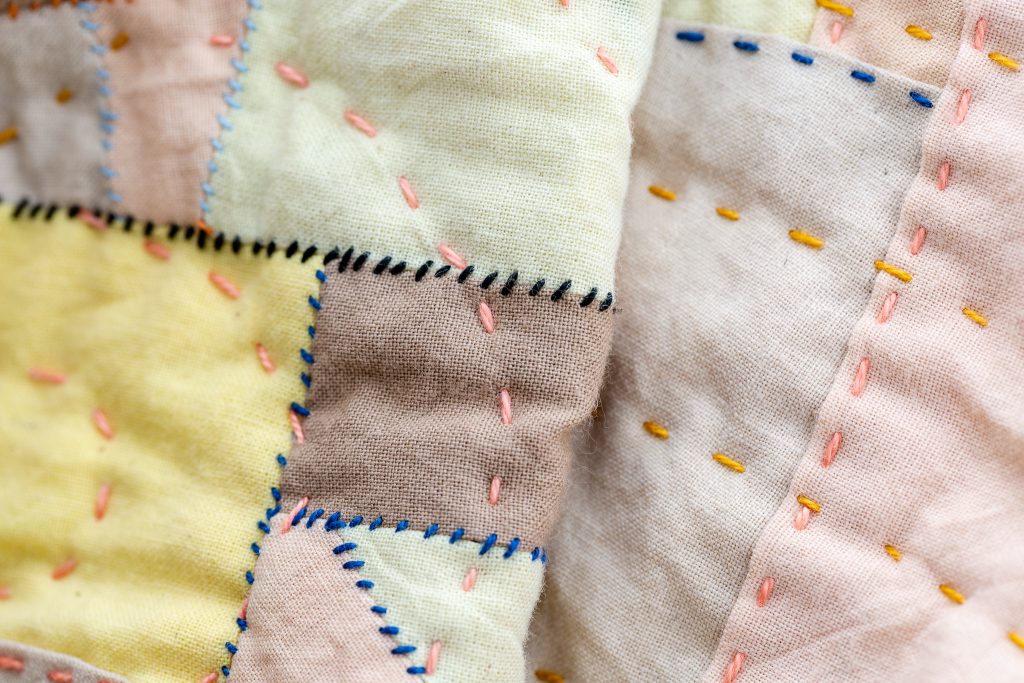
A detail of “The Loveliest and Saddest Landscape in the World.” Photo by Heidi’s brother, Jeff Parkes.
What is the support system you have in place for creating your work?
Heidi: I’m single, and supporting myself with my quilts and yoga- so honestly, creating my work IS the support system for the rest of my life.
That said, I learned a lot at The School of the Art Institute of Chicago (SAIC, BFAEE 2005), and I’m a very active alumni. The free alumni resources that they provide are an essential support for any career/art difficulty that comes up for me. My alumni friends, and my more recent art friends whom I’ve met through Instagram and the Milwaukee art world are essential for me too. A good creative conversation with a peer is a powerful way for me to move my art forward. My oldest friend, Kat, got me into quilting with fabric, and she’s always there to pour my heart out to.
Finally, my parents are both creative, and were supportive of me following my dream of being a quilter. Knowing that I had their support as I started my ‘small business’ was very empowering.
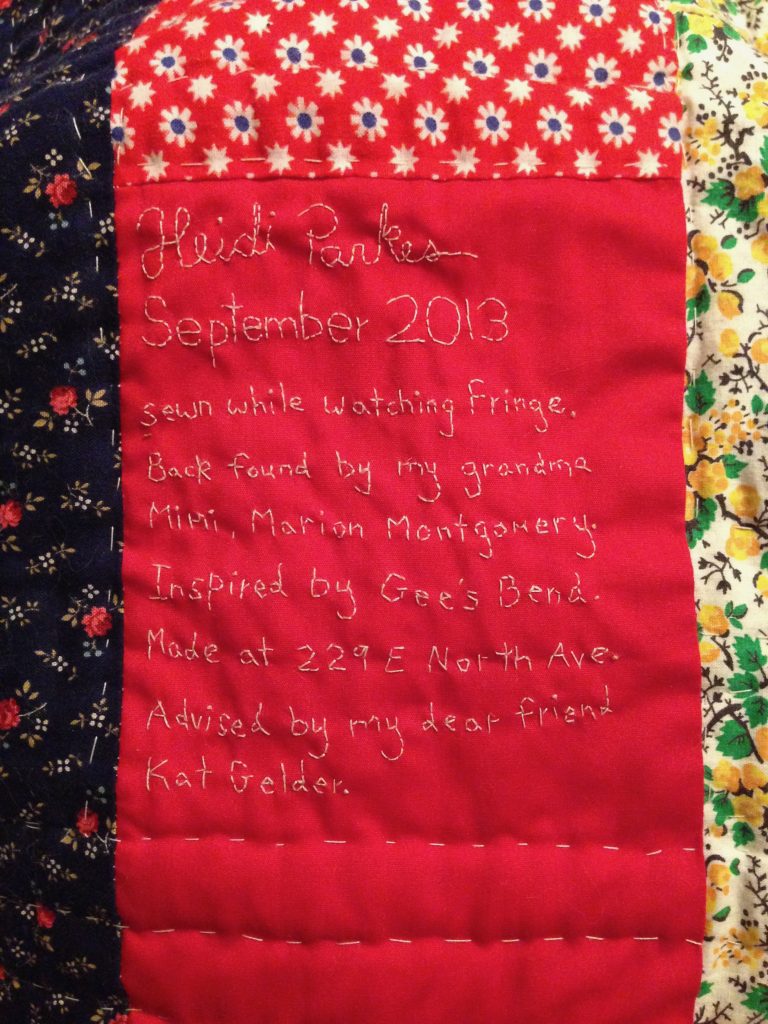
Detail of Heidi’s first fabric quilt. Image courtesy of Heidi Parkes.
How do you deal with comparison to / envy of others? Can you describe a time when you used comparison/envy/admiration to push yourself in your own work and self-discovery?
Heidi: To be honest, I’m mostly just envious of other people’s personal lives. I’ve had a rough time with romantic relationships. Envy creeps in when I just want to be happy for others, and I am so grateful for the proof that the things I want, appear to be possible. This predicament has forced me to grow my career to be much larger than I’d’ve probably dared/desired. My art has had to be ‘big enough’ to fill the space in my heart that longs for a healthy, loving relationship.
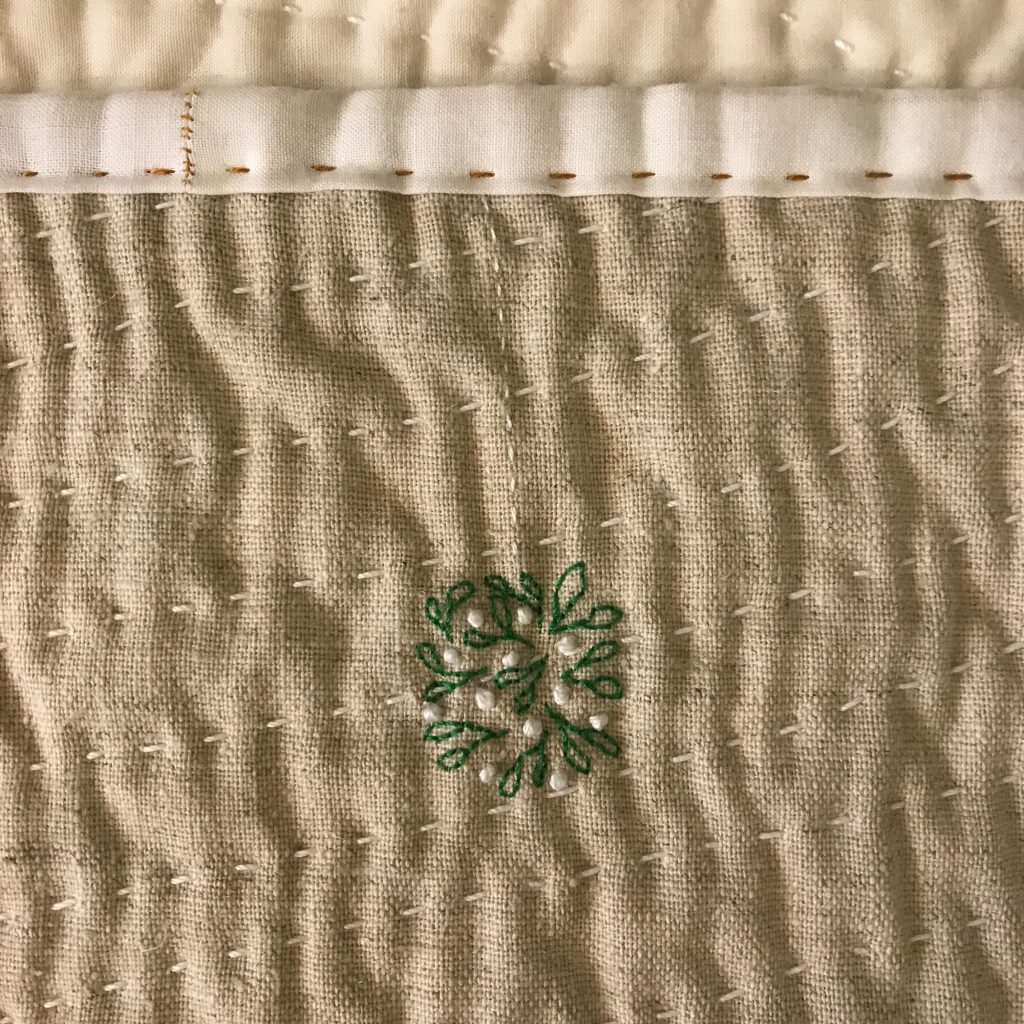
Detail of mistletoe in “Winter 36 Times” (full quilt image below), which was made for and exhibited in the WI Museum of Quilts and Fiber Arts’ Third Biennale, “Keeping Warm.” Image courtesy of Heidi Parkes.
What was the most challenging thing you ever made?
Heidi: The first fabric patchwork (quilt top) I ever made was a backdrop for a school play. I was a high school art teacher in 2007, and we included some monologues from the women of Gee’s Bend in a show we called ‘Tapestries.’ A few students and I improv pieced the quilt top to be 25×50 feet. It was uniquely challenging.
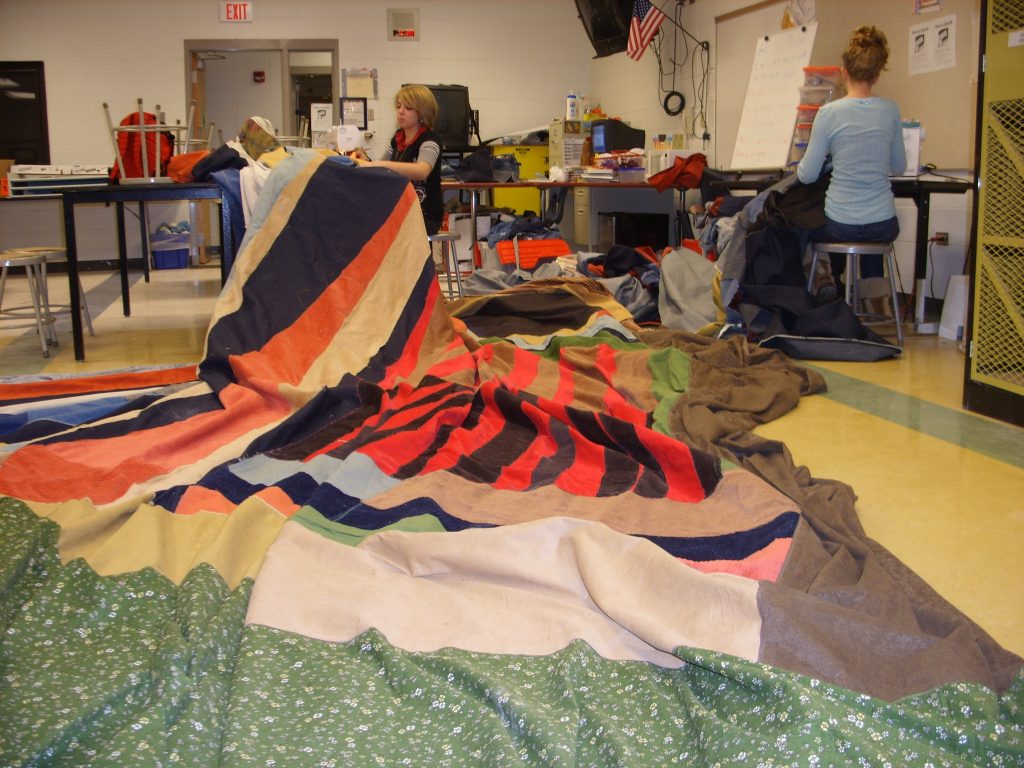
Students sewing in Heidi’s art classroom. Image courtesy of Heidi Parkes.
What does it mean to you to work in a traditionally domestic medium that historically has been regarded as predominately female (aka “women’s work”)?
Heidi: I love it. In ceramics I was always pressing lace, fabric, and buttons into the clay. By college, I was starting to notice and to be asked about the ‘women’s work,’ aspect of these materials, and didn’t quite know how to respond. As I tried out new mediums, I brought my textiles with me, and I made my first ‘quilt,’ in a metalworking class, and crocheted around paper in a drawing class, and then finally realized that I really ought to take a fibers class, where I made quilts out of paper.
I’m writing this in September 2018, and this month is my 5-year anniversary of quilting my very first fabric quilt. It took me a while to just make a quilt, ‘the normal way,’ but once I did, there was no turning back.
Quilting allows me to work in a home studio, which is an incredibly practical option. The materials, which have a history of being repurposed, are amazingly affordable. I can work as large as the most impressive paintings in an art museum, and then fold them up, and transport them in my suitcase. I can create deep meaning in my art because of my materials and medium. Interestingly, this ‘women’s craft’ gives me a flexibility and specificity that allows me to thrive in the art world.
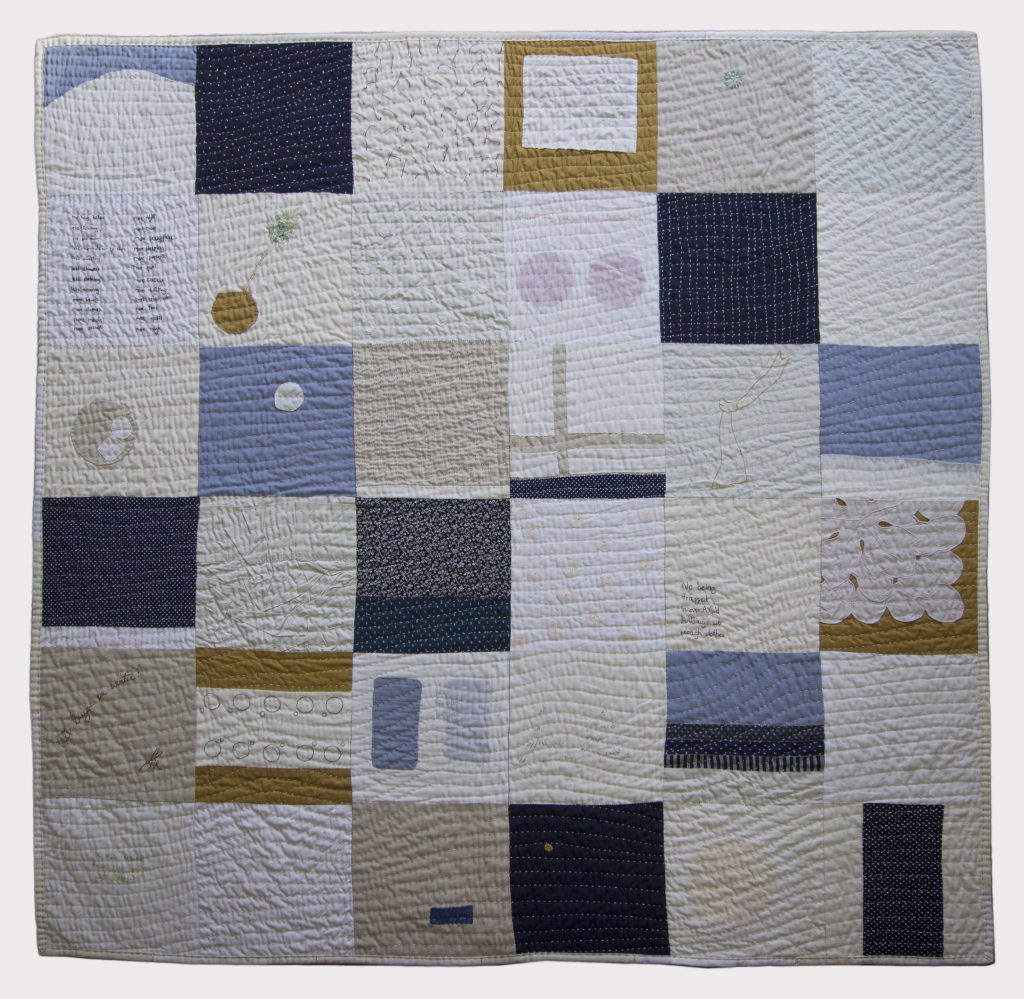
Winter 36 Times. Image courtesy of Heidi Parkes.
How do you see your current work in the context of quilting history?
Heidi: I see my work as a hybrid of many world traditions in quilting. I also approach quilting like painting, with the intention of exhibiting quilts on the wall, which is a relatively new way to make a quilt within the canon of quilt history. Therefore, thanks to globalization and feminism, I think I’m making quilts that could only exist now. I like it that I’m doing that by hand, usually without machines, with traditional techniques, to make objects that ‘could’ still be functional.
Thank you, Heidi! It was such a pleasure to learn more about you and your work! For more about Heidi, visit her website, or connect with her on Instagram and Facebook and Pinterest.
Would you like to be featured in The Creativity Project? Reach out! I’d love to hear from you! Contact me.
Want to participate, but not necessarily be featured? You can do that! Click here to take the survey!
The Creativity Project can be found on Instagram, Pinterest, Twitter or Bloglovin’. Or check back here every Friday of 2018!

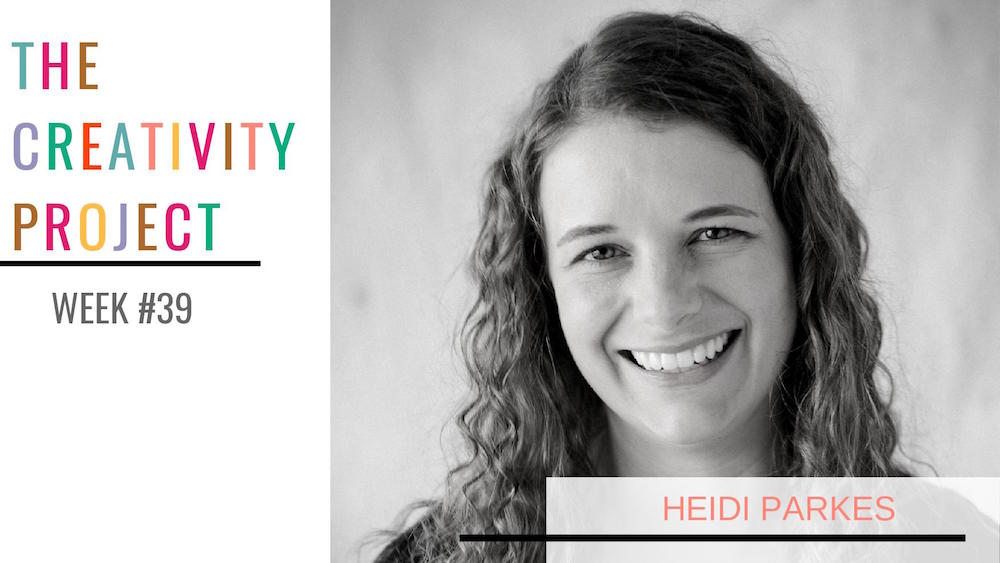
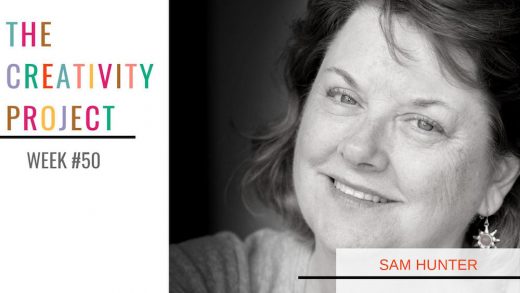
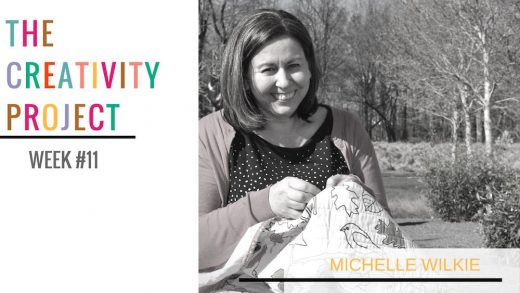
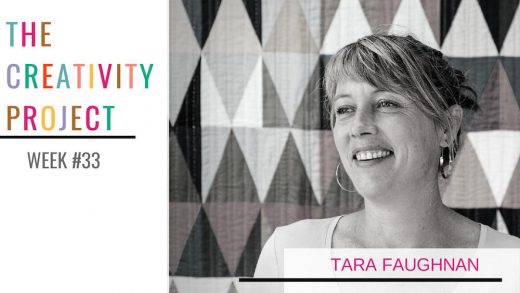

Bernie
September 30, 2018 at 10:11 pmKim, thank you for this post- I had not seen Heidi’s work before. It is lovely. I really enjoyed reading her thoughts and looking at her work a bit more closely. Her feelings on ‘who is an artist’ were thought provoking.
Heidi- your style is so peaceful- I love it! I hope you find just the right relationship- that person is out there somewhere!
lelandavestudios@gmail.com
October 1, 2018 at 2:26 pmThank you Bernie! And agree with your sentiments. Not only is Heidi’s work vibrant and rich, but she had such thought provoking answers to the discussion. So glad you enjoyed!